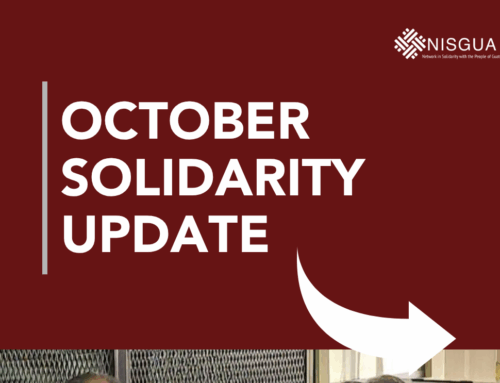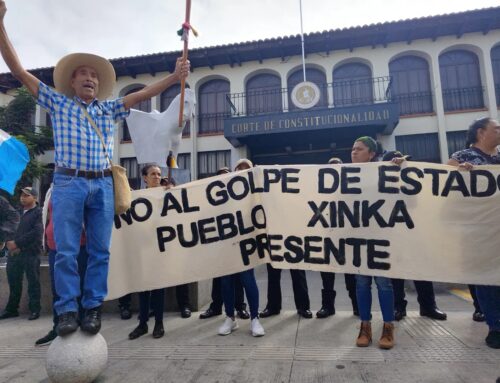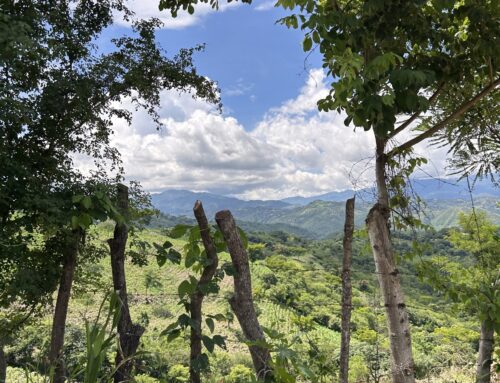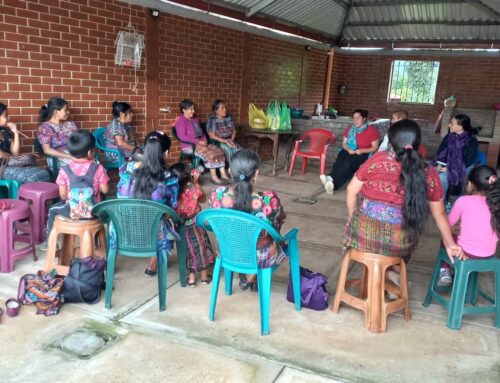NISGUA continues live coverage of the trial in Guatemala of Efraín Rios Montt and Mauricio Rodriguez Sánchez for genocide and crimes against humanity. See our archive of live Twitter updates at @NISGUA_Guate.
Testimony by Ixil survivors continued today, with ten witnesses describing massacres and the persecution of displaced civilian populations by the Guatemalan army. To date, 98 individuals have offered their eyewitness accounts; the prosecution intends to call 122 witnesses, but some may be unable to attend the trial due to illness or have passed away,
according to a Guatemalan media report.
Witnesses elaborated on key elements of the crime of genocide, including the stealing of children and cultural impacts derived from forced participation in paramilitary patrols. Jacinto Francisco Gomez, today a resident of Huehuetenango, opened the day’s hearing, telling of his capture by the military as a child following the July 1982 massacre at Vicalama. “When I was 8 I remember I was coming back from working in the field with my dad. We were on our way back when we got to our community and the houses were burning. My mom suggested that we go back to Vicalama.” As his family fled they were surrounded by soldiers. One of Jacinto’s younger brothers was shot in his arms, and he witnessed the killing of his mother and sisters with machetes.
“They surrounded us and grabbed my smallest brother and put him in a backpack. I had to follow them. The soldiers said, ‘You are little and you brother is little. Who is going to take care of you?’ A helicopter came and it took us to Huehuetenango… They gave us a bunch of toys. I realized that my little brother was gone. And I started to cry and cry.”
After being taken to Huehuetenango with two other children, Jacinto was taken to Petén, where he said he was beaten by a woman who took care of him. A military officer, Colonel Castellanos Góngora, obtained a false birth certificate under another name in order for the child to be adopted. During 22 years of separation from his family and community, he lost the ability to speak Ixil. When finally returned to visit his community, he said, “Everyone told me they were my aunts and uncles. …They brought me back to where I used to live and I remembered it well. This same day they brought me in the afternoon to where my mom and my two siblings lived. ‘This cross is where we have your mom buried.’ I realized that my last names were wrong. …My father’s last names were Raimundo Raimundo.”
He asked for justice in the name of his murdered family members: “Sincerely, I decided to come to testify today because I need there to be justice for those that did all of this to me. My 2 year old and 4 year old brothers didn’t do anything to anybody. My mom didn’t either. What we did was work so that we could eat. This is my testimony.”
Witness Nicolas Toma Matón also testified that he believed his two daughters may have been taken by the military during the massacre of Villa Hortensia II in April, 1982: “Many children died, two of my own girls disappeared on the day of the massacre. I don’t know what happened to them. I imagine that they took them.” Ana Toma Cruz and Marta Toma Cruz were 5 and 4 years old in 1982.
After two years of displacement in the mountains, Nicolas Toma Matón returned to the town of San Juan Cotzál, where he was forced to participate in Civilian Self-Defense Patrols (PACs) organized by the military. “I was forced to serve in the civilian patrols. If I didn’t do it, I believed that the army would kill me.” Unlike other members of the PACs, Nicolas said, “I never went to the communities to capture people. I was made to fix roads. They didn’t give me a gun.” In questioning by defense lawyers, Nicolas testified that he never saw dead or injured soldiers during his patrols.
Another witness, Francisco Guzman Ramirez, survivor of the massacre of Ilom, told of his experience after turning himself in to the military garrison on the La Perla plantation, now the site of the Xacbal hydroelectric dam. While held at the garrison, he was also forced to patrol. “When we went to turn ourselves in to the Finca La Perla, they hit us and said that we were animals, coming down out of the mountain. We were afraid not to patrol because they were going to hit us.” Francisco explained that the Ixil patrollers were punished for speaking their native language and told to speak Spanish instead.
Francisco said that the patrols cut down the crops of the displaced population, but denied participating in this himself. “The military gave the orders to the civilian patrol. We were forced to go out, without eating. We were forced to patrol. …We were supposed to show the soldiers where the people were, but we didn’t know.” He echoed other witnesses who have spoken of being used as human shields for military patrols: “When we went to patrol with the army, the civilian patrols went first and the soldiers behind so that we would die first.” Pedro Caba Cobo, also a survivor of the Ilom massacre, also said that he was used as a human shield: “We were the first ones to fall… They were afraid to die. They saw us as dogs, if they killed us it was like killing a dog.”
The trial will continue tomorrow with expert witnesses offering testimony via video-conference,
potentially including former Guatemalan Kaibil Special Forces soldiers who will testify on behalf of the prosecution. More excerpts from today’s testimony
can be found on our Twitter feed, with some examples offered below.
Francisco Velazco: I assume that the army is the one to protect Guatemalan citizens, and yet they killed our family. I don’t understand why.
— NISGUA (@NISGUA_Guate) April 3, 2013
Manuel: They didn’t shoot me. I was 9. I stayed by the dead bodies. I understood that I was a clue so that my family would come and find us
— NISGUA (@NISGUA_Guate) April 3, 2013
Juan: Aren’t we people, aren’t we too children of God? It hurts my heart. We want to know if you can help with the damage they have done.
— NISGUA (@NISGUA_Guate) April 3, 2013
Maria: There were children, there were babies. They burned. #GenocideGT
— NISGUA (@NISGUA_Guate) April 3, 2013
Pedro: They sent us to clear the bodies. The patio was filled with blood, behind the school. That’s where they executed everyone.
— NISGUA (@NISGUA_Guate) April 3, 2013
NISGUA has provided human rights accompaniment to the witness’ organization, the Association for Justice and Reconciliation, and their lawyers, the Center for Human Rights Legal Action since 2000. We will continue to bear witness to the truth and bravery of these survivors throughout this historic trial. To bear witness with us, stay tuned to our ongoing live Twitter coverage
@NISGUA_Guate, like our
Facebook page and
sign up for email updates.





Leave A Comment